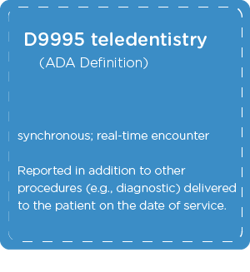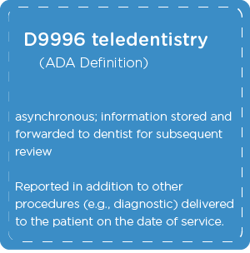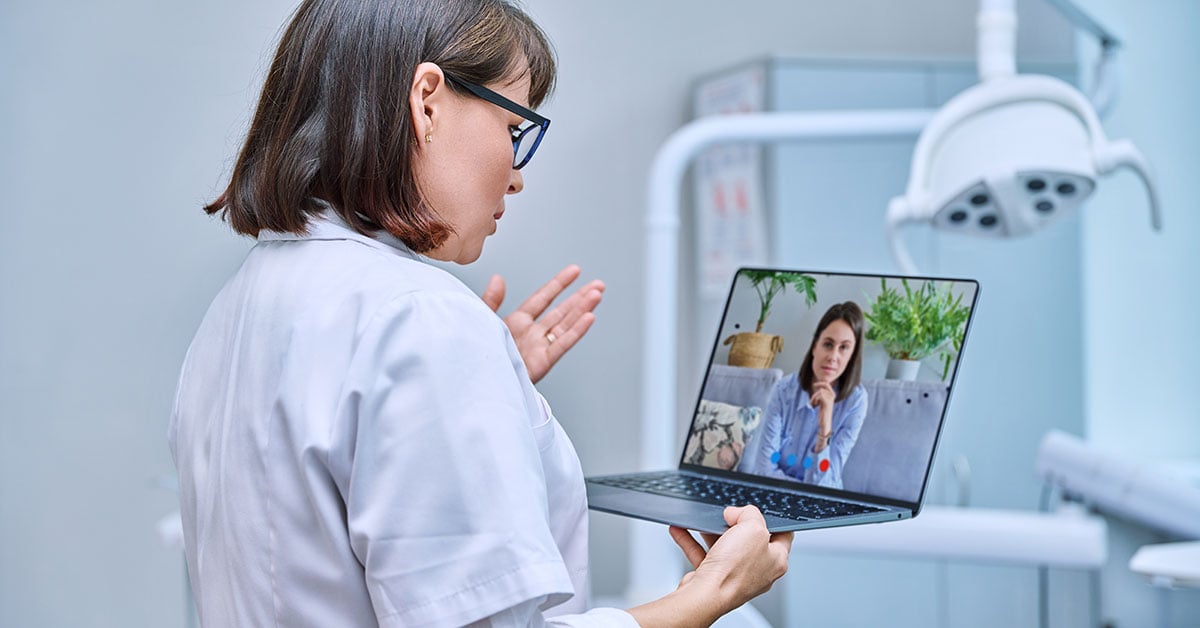A “breaking news” banner grabs your attention. The potential for fraudulent teledentistry might not qualify as “breaking news” although a recent Dental Economics article does sound a strong alarm.
This nor the DE piece is intended to squelch your teledentistry plans going forward. But it does serve as a bold reminder to…
And…
- Clarify your state’s teledentistry regulations
We assume above-board intentions here. But those two caveats are a top priority if you want to avoid even the slightest scent of fraud potential.
A few “red-flags”
First things first. Let’s explore the specific elements relevant to the valid cautions raised in the Dental Economics content.
Red-flag 1: “poor understanding of coding and insurance laws” [1]
It’s not uncommon for some to be somewhat naive about what’s allowed and how to submit a properly coded claim. The more services (codes required) you introduce - such as teledentistry - the greater the potential for fraud to come sniffing around.
Again, best intentions assumed, but knowing the codes creates a fundamental level of protection.
Red-flag 2: lack of understanding regarding your own insurance contracts or related state law specifics
Changes to your provider networks, fee increases, and more can create confusion - for patients, you, and your business team. New services like teledentistry increase the potential for misinterpretation about coverage allowances provider to provider.
Red-flag 3: audit potential
An audit typically follows suspicion. New coding protocols for teledentistry “increase the potential for fraud.” [2] You can expect third-party payers to have an increased awareness of billing associated with virtual dental visits.
Red-flag 4: payment for services
Rules relative to insurance contracts and state approved Medicaid policies will impact procedural reimbursements. Again, state laws “govern what (you) a dentist can and cannot do while treating a patient with teledentistry.” [3]
Red-flags considered there’s plenty of reason for optimism around teledentistry. The more proactive you are to learn and leverage the sanctioned guidelines via the ADA and the state you practice in the less likely you are to raise a red-flag.
And again, gratitude to Dental Economics for helping keep the specifics on-the-radar.
How to keep your teledentistry services fraud-free
Fradulent activity surrounding virtual dentistry has much to do with payer policies. And state requirements factors into the mix.
Thus, it pays to know the industry and state parameters, your networks, and how to code each teledentistry related visit and/or procedure.
Where are you?
Location relevance is key to fraud-free teledentistry. It’s natural to desire to implement a new service. But certain services such as teledentistry must pass the standards of state regulations.
Some states (like Texas) have been more calculated in their approval of teledentistry. Requirements for private insurance coverage of the service are applicable in 29 states.
- Check your state requirements and any additional allowances that are made for private insurance coverage.
- Do your advance research and seek input from your state dental board regarding virtual dental care.
Who’s in your network?
Coverage boundaries vary company to company for teledentistry. Their provisions could range from partial coverage to requiring documented approval before proceeding with a virtual visit.
- Explore the provider networks that stay current with dental innovations such as teledentistry.
- Expand your network to include those that value innovative services, industry trends, and see the future potential for their customer’s dental care.
And a brief word about Medicare and Medicaid…
- Look into the limits that apply to teledentistry under Medicare.
- Leverage any applicable supplemental options that exist within a patient’s Medicare policy for teledentistry coverage.
How did you connect?
Coding is a common trip-wire for those who trigger a fraud-alert. According to the ADA there are two CDT codes that apply to teledentistry.
Each have to do with how you connect with a patient in a teledentistry visit.
- 1-A synchronous teledentistry connection: this is a real-time video consultation that involves a mutual conversation between you and your patient.
- 2-An asynchronous teledentistry connection: this utilizes stored or shared information with the patient or a referral source (e.g. diagnostic/treatment data, digital images, educational resources, etc.).
It’s vital to be specific when coding your teledentistry visit.

- D9995 applies to Synchronous teledentistry connections
- D9996 applies to Asynchronous teledentistry connections
Follow the teledentistry essentials (and cautions) covered here and check out these related resources to enhance your understanding:
Should You Be Concerned About Liability and Malpractice Coverage for Teledentistry?
Teledentistry or In-Person Dental Visits: Where Do Insurance Reimbursements Apply?
Use the trusted knowledge-base and tools from a team dedicated to teledentistry
Teledentix is an innovative, turn-key teledentistry solution created by Virtual Dental Care. The all-in-one platform will enable you to adapt teledentistry to your patient care and extend your services beyond the walls of your dental practice…and improve your patient care in the process.
LEARN MORE about the Teledentix platform.
[1] https://www.dentaleconomics.com/practice/article/14213460/teledentistry-avoid-these-potentially-fraudulent-mistakes
[2] https://www.dentaleconomics.com/practice/article/14213460/teledentistry-avoid-these-potentially-fraudulent-mistakes
[3] https://www.dentaleconomics.com/practice/article/14213460/teledentistry-avoid-these-potentially-fraudulent-mistakes



